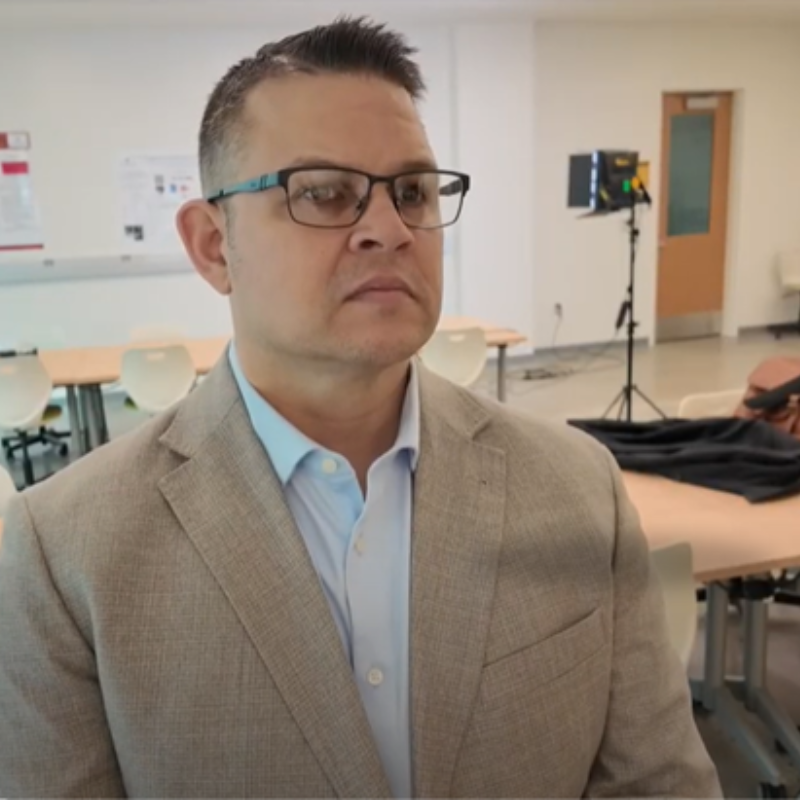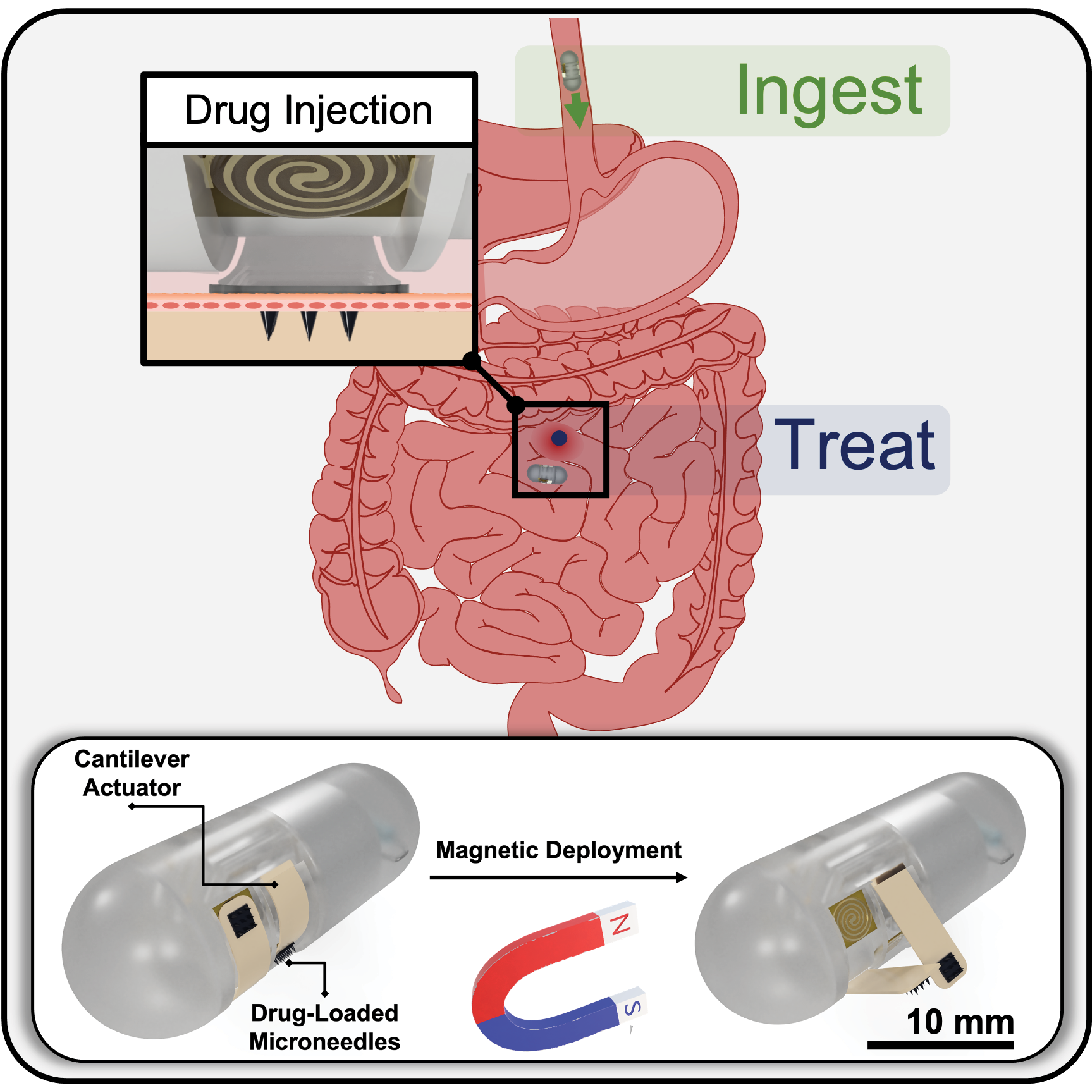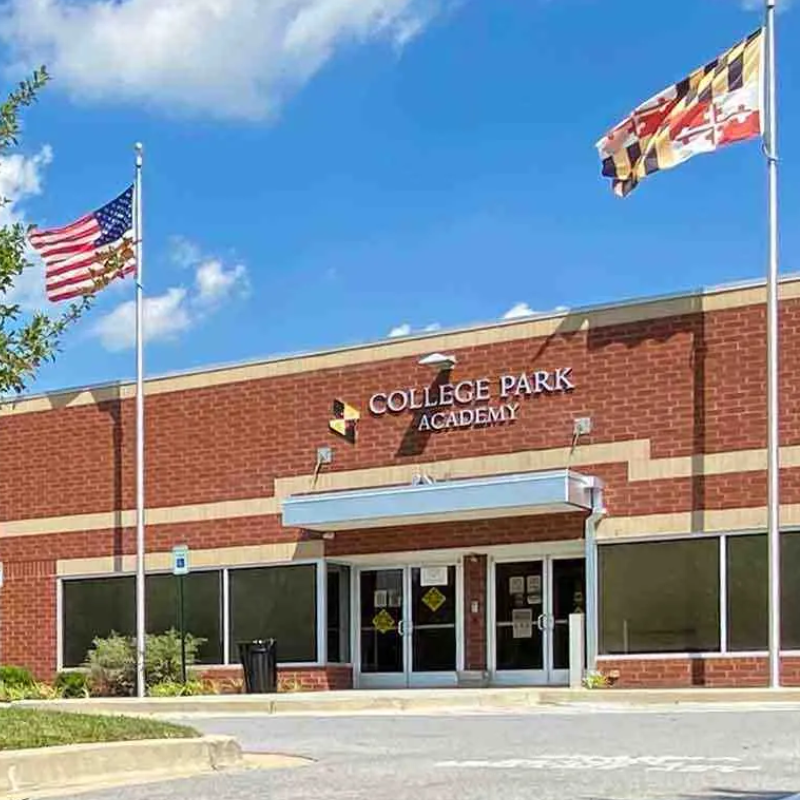News Story
UMD Researchers Bridge Gap between Microelectronics, Biological Systems
Researchers often use microelectronic devices embedded with biological components to interrogate biology, but such devices can do much more – perhaps even control biology.
As such, researchers have looked to patterned assemblies of proteins and cells for in vitro metabolic engineering to characterize—and potentially control—cell metabolism on a chip. New devices are envisioned to recreate animal and human physiological functions on a chip, and such capabilities could revolutionize drug development.
With this end goal in mind, University of Maryland (UMD) researchers have sought to develop new “biofabrication” methodologies that help connect microelectronics with biological systems and yield new approaches to device assembly and communication.
Led by UMD Fischell Department of Bioengineering and Robert E. Fischell Distinguished Professor William E. Bentley, the team of researchers electrically mediated the assembly, interrogation and control of a multi-domain fusion protein—HLPT. They developed a biological system that can be electrically tuned using a natural redox molecule whose biochemical response is capable of providing the signaling cues to drive bacterial population behavior. Additionally, the team found that the biochemical output of their system correlates with the electric input charge—demonstrating that electrical inputs could be used to control complex on-chip biological processes.
The researchers’ system uses electrical signals to assemble and tune an enzymatic pathway on a gold electrode chip, thereby creating a programmable hybrid device that contains both biological and electronic components. The electric signals can control both the amount of assembled enzymes and their activity, the latter by oxidation through a diffusible redox mediator.
Through a series of experiments involving HLPT, the team successfully demonstrated how their biohybrid system could translate electrical signals to modulate complex biological behavior—including cell phenotype. To do this, they prepared HLPT-immobilized electrode chips and applied several different amounts of charge to reduce enzymatic activity to various desired set-points. They allowed the enzymatic reaction to take place and electrochemically measured its biochemical output—a signal molecule that cues bacterial behavior. Then, after exposing the cells to the product solution that contains the signal molecule, autoinducer-2, the bacterial cells changed their behavior from that of individual cells to be more like a collection of coordinated cells. A specific population of cells or a “quorum” then responded by making a blue fluorescent protein in response to the chip-synthesized signal molecule.
Their results demonstrated for the first time electrically-controlled generation of a bacterial communication molecule and similarly modulated biological signaling as indicated by cell fluorescence. Moreover, this finding demonstrated an instance whereby population-wide biological behavior was modulated electrically.
The group anticipates their system and methods can be easily applied to microfluidic devices with embedded micro-scale electrodes and embedded enzymes, proteins, cells and other biological components. Such biohybrid systems are being investigated by the Maryland team and others to mimic human physiology—all at the micro-scale. In this way, drug discovery approaches can be undertaken at dramatically reduced cost and time because more in depth information about a new drug’s future success can be achieved.
Additionally, the methodology outlined in this study—which was published in the late-July edition of Nature Nanotechnology—could serve as a powerful addition to the “biofabrication” toolbox, furthering the utilization of biologically-inspired nanoscale processes by bridging the fabrication and communication gaps between microelectronics and biological systems.
Full text of the Nature Nanotechnology paper is available online.
Support for the Research
In addition to Bentley, research team members and co-authors include: Ms. Tanya Gordonov, UMD bioengineering graduate student and first author; UMD Director of the Institute of Systems Research Reza Ghodssi; UMD Professor and Maryland NanoCenter Director Gary Rubloff; UMD Professor Gregory Payne (Institute for Bioscience and Biotechnology Research); UMD Faculty Research Associate Eunkyoung Kim (Institute for Bioscience and Biotechnology Research); UMD Assistant Research Scientist Yi Cheng (Materials Science and Engineering); UMD post-doctorate fellow Hadar Ben-Yoav (Department of Electrical and Computer Engineering); and U.S. Food and Drug Administration Research Physicist Jun-Jie Yin.
Published July 28, 2014









